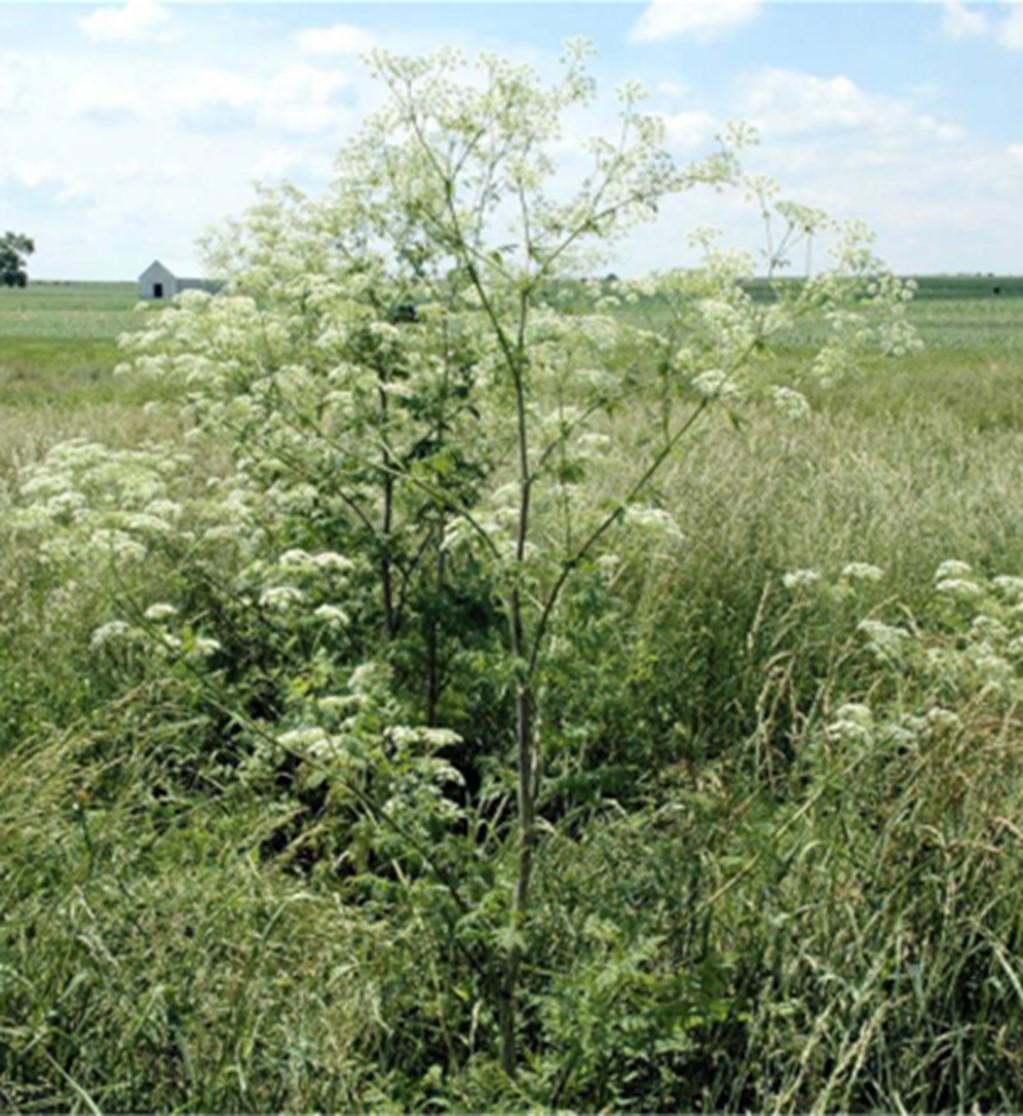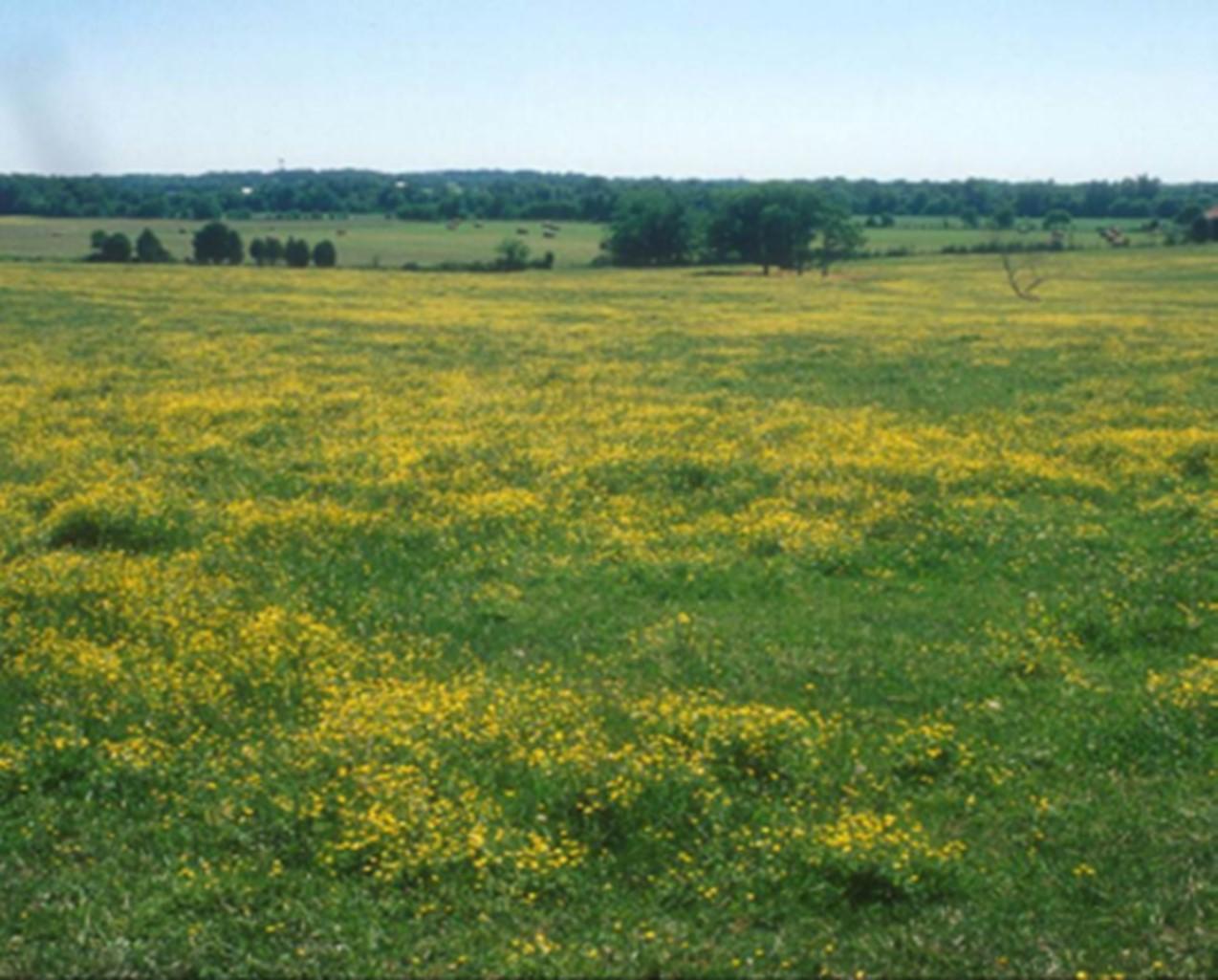Control Efforts for Poison Hemlock and Buttercups Begin in Late Winter
Late winter is one of the best times of the year to assess fields and fencerows for presence of cool-season weeds. Further, the preferred time to implement control tactics can often be in March as daytime air temperatures begin to rise and are maintained above 55F. This is when cool-season weeds are younger and begin their active vegetative growth before initiating flowers later in the spring. Winter annual and biennial weeds typically germinate from seed in the fall and produce flowers during the spring

Poison hemlock is easily recognized throughout the winter and early spring. Classified as a biennial, it often grows as a winter annual in Kentucky, particularly plants that germinate during the previous fall. Poison hemlock plants form rosettes that remain green throughout the winter in a somewhat semi-dormant stage (Figure 1). These young rosettes are often found in areas where poison hemlock was present the previous year, particularly along fence rows and other isolated areas. Younger plants can be identified by their fern-like leaves with leaf petioles that have purple spotting and no hairs. After resuming active growth in late winter, they form larger rosettes. Later flower stalks elongate during the spring, producing clusters of white flowers in June. Mature plants can grow up to 6 to 9 feet tall (Figure 2).
The best time for control using herbicides is generally when plants are in the younger rosette stages of growth in late February and early March. Herbicide products containing 2,4-D, dicamba+2,4-D (Weedmaster, Brash, Rifle-D, etc.), and aminopyralid (GrazonNext, DuraCor) are the preferred choices for obtaining effective control.

Effectiveness of chemical control can decrease as plants begin to elongate and become more mature. Poison hemlock plants can be toxic to animals; therefore, when using herbicidal control methods on larger plants, it is important to remove animals from treated areas. Animals are more likely to graze poison hemlock plants following herbicide treatment than before. On mature plants mechanical methods such as mowing can be an alternative control method if infested areas are accessible. Mowing and other mechanical control efforts should be done after flower stalks elongate but before plants begin to flower.

Another common weed we observe during the spring in grazed pasture fields are buttercups (Figure 3). Various species of buttercup (Ranunculus spp.) are likely to be found in Kentucky. These include Bulbous, Creeping, Hispid, Tall and Smallflower buttercup. Although their leaf shape, flowers and other characteristics may vary, many buttercup plants can be noticed by their yellow flowers, commonly with five waxy-like petals. Like other winter annual weeds, buttercup often emerge in the fall, but they can also germinate in late winter and early spring. The peak of the flowering period usually occurs in April but may persist into May. When flowers are observed, new seed may already be in development on the flower stalks.
Buttercup is more frequently found in fields or field areas that are utilized or heavily grazed in the fall and winter months. This results in thin, bare areas throughout the field, creating an environment where buttercup seed can readily germinate, and seedling plants can thrive. Therefore, one long-term control strategy involves utilizing management practices which help promote growth of desirable forage species and minimize bare areas. Inter-seeding more desirable forage species may be another practice to consider. This is not always practical in some fields that are essential for winter feeding.
In the short-term, herbicide treatment in early spring is an option. Herbicide products that contain 2,4-D, or other broadleaf type pasture herbicides are generally effective on most buttercup species. To be most effective, herbicide treatment should be completed when plants are in the vegetative stages of growth before flowers develop and produce new seed. Hence, herbicide applications should normally occur by late March. Treatments after flowering offer little benefit since buttercup plants are already producing new seed and plants die back naturally by late spring and will not be present the remainder of the year.
If you do see developing cool-season weed problems as we transition from late winter into early spring, you may need to take action soon to begin to correct these problems. In general, herbicide products that contain 2,4-D are usually effective on younger rosettes of poison hemlock, biennial thistles and buttercups. Another course of action in the spring is a “wait and see” approach before implementing a control tactic. Yet, keep in mind that smaller weeds are easier to control using herbicide treatments than after they increase in size and become more mature.
Source: March 1 Kentucky Forage News. J.D. Green, PhD, extension weed specialist in the UK Department of Plant and Soil Sciences, provided this information.
